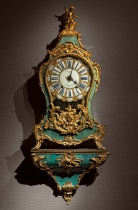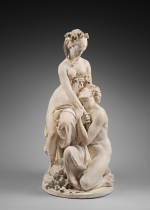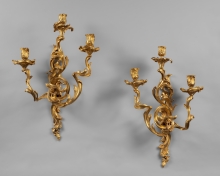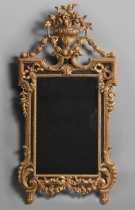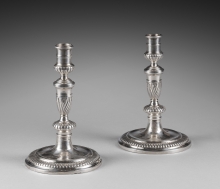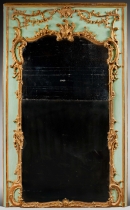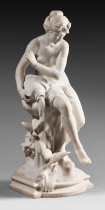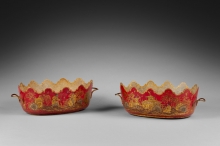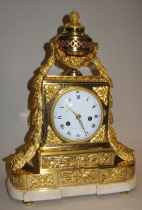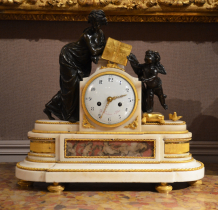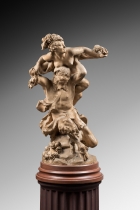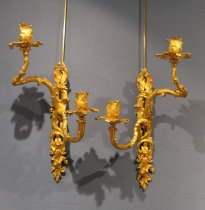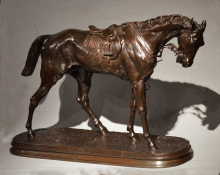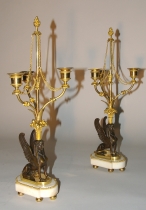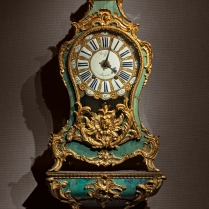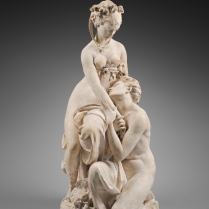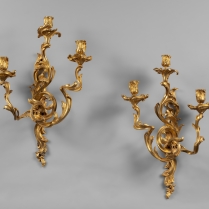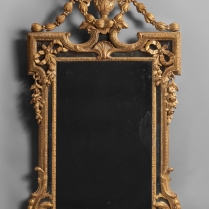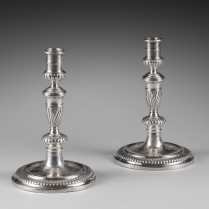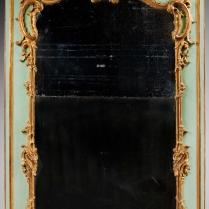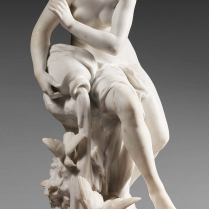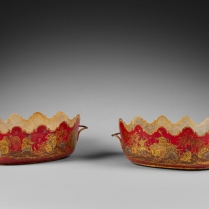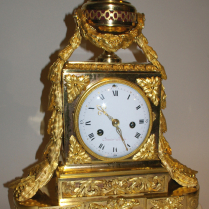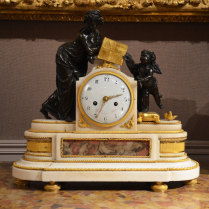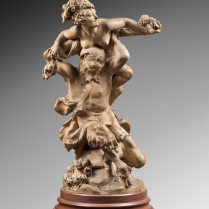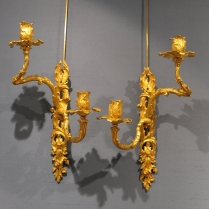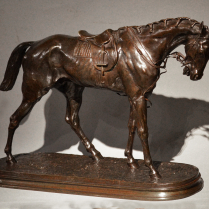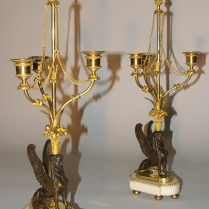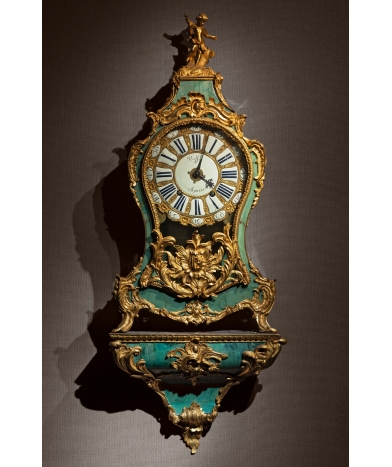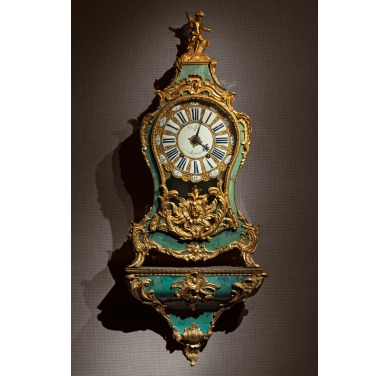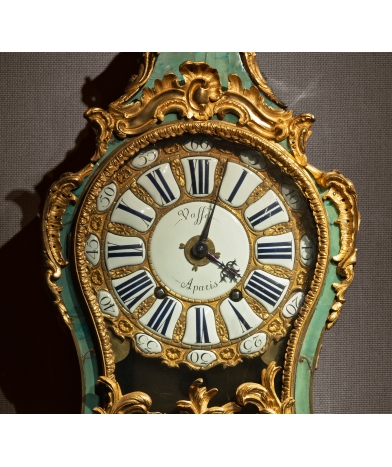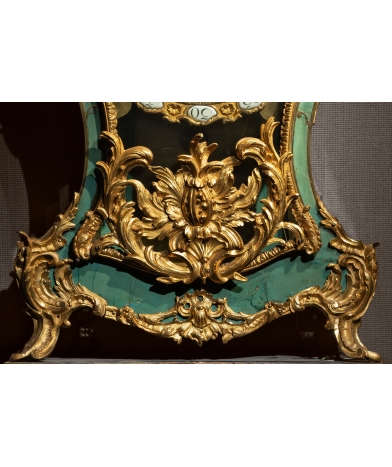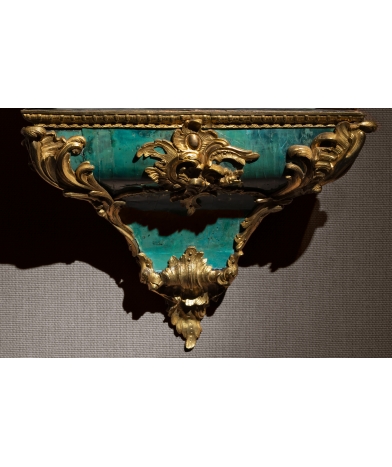Rocaille cartel in green horn
Louis XV Period
Dimensions : H. 106.5 cm, W. 32 cm, D. 13.5 cm
In the 18th century, timepieces designed to be hung on walls were called “cartels”. Many of these objets d'art have unfortunately lost one of their three components, and we should only be interested in those cartels that are still complete, like this one, with their base (also known as the “cul de lampe”), main body and capital. For certain special orders, horn veneer was applied to the three wooden structures; the green color was achieved by applying iron oxide before the veneer was applied, the latter being transparent.
This superb cartel from the Louis XV period also retains its original clock movement, enamels on the dial, and finely chased and gilded bronzes. It is distinguished by a rather rare size, as it lies somewhere between the very large cartels, which can reach 1.50m, and the small 80cm cartels. Its elegance is also due to its well-balanced violin shape and reduced depth, which required the watchmaker to create a flatter movement. In the mid-18th century, enamellers improved their techniques, enabling them to apply a single coat of enamel to the entire dial, thus saving a complex piece of chased bronze to accommodate the enamel cartouches. But before this technological improvement, cartels featured a much more refined 25-cartouche dial. This is the case with our cartel, which features an enamelled cartouche for each hour, a small cartouche for 5 minutes, and the central cartouche with the watchmaker's signature. The enamelled parts and the gilded bronze enhance each other.
The rich bronze ornamentation of our cartel features foliate scrolls, stylized acanthus leaves and a large burst pomegranate. The capital features a victorious Love.
As for the clockwork, a number of features point to the presence of a special control: the chimes indicate the hours and half-hours, as well as the quarters and three-quarters as they pass. In addition, a cord allows the chime to be triggered on demand, making it possible to tell the time at night without lighting a candle.
The movement is signed “Vasse A Paris” on the central cartouche and on the back plate. Watchmaker François Vasse was based on rue de la Harpe in Paris, and was appointed master in 1748. In Tardy's “Dictionnaire des Horlogers Français”, we note the signature “Vasse A Paris” on a green horn cartel. This is undoubtedly ours.


